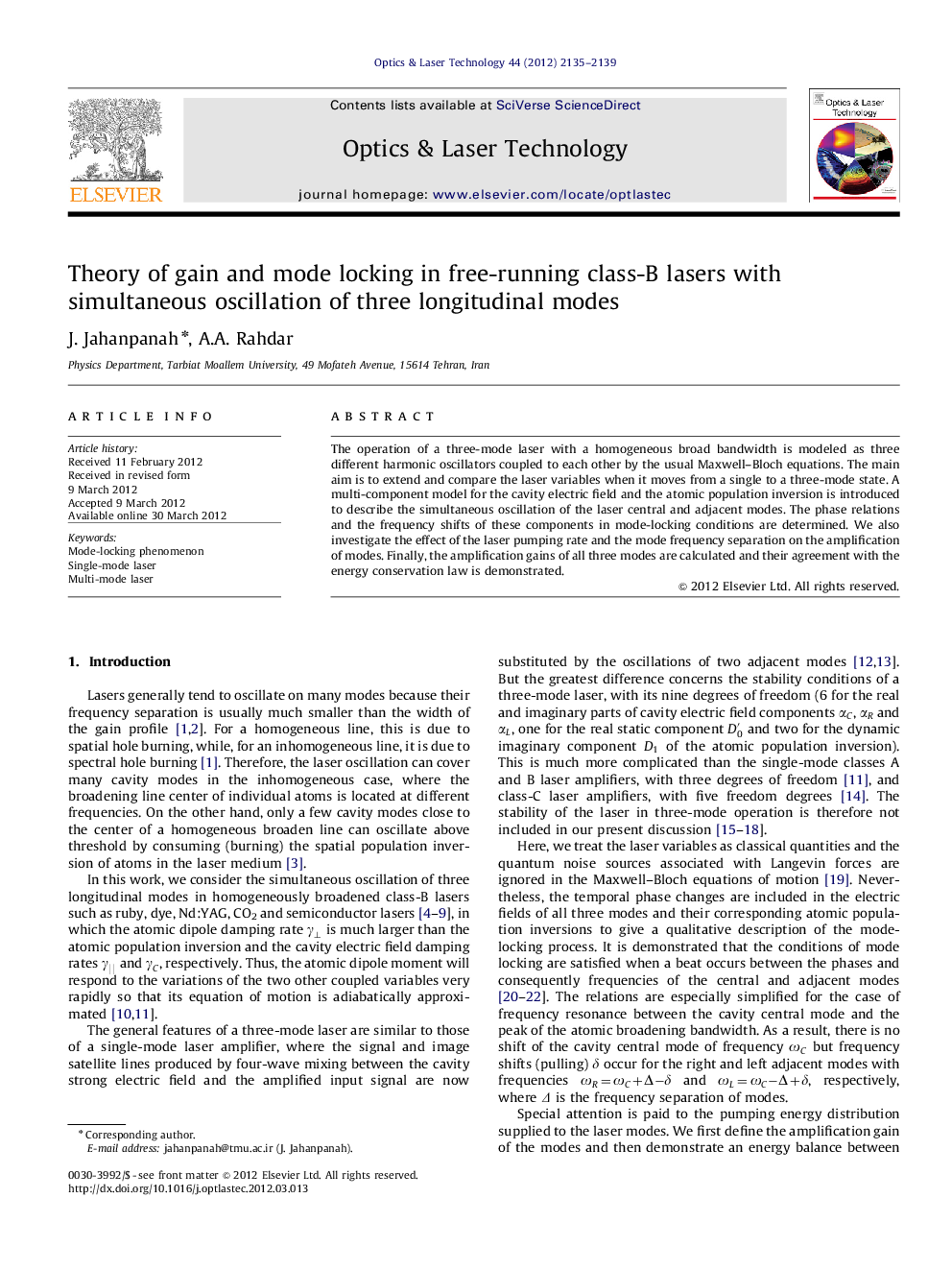| Article ID | Journal | Published Year | Pages | File Type |
|---|---|---|---|---|
| 732383 | Optics & Laser Technology | 2012 | 5 Pages |
The operation of a three-mode laser with a homogeneous broad bandwidth is modeled as three different harmonic oscillators coupled to each other by the usual Maxwell–Bloch equations. The main aim is to extend and compare the laser variables when it moves from a single to a three-mode state. A multi-component model for the cavity electric field and the atomic population inversion is introduced to describe the simultaneous oscillation of the laser central and adjacent modes. The phase relations and the frequency shifts of these components in mode-locking conditions are determined. We also investigate the effect of the laser pumping rate and the mode frequency separation on the amplification of modes. Finally, the amplification gains of all three modes are calculated and their agreement with the energy conservation law is demonstrated.
► Maxwell–Bloch equations are used to describe the operation of class-B lasers in three-mode state. ► The phase beating condition of (4.1) (2φC−φR−φL=02φC−φR−φL=0) is unavoidable to observe the mode-locking phenomenon. ► The amplification gains of all three modes are demonstrated to satisfy the energy conservation law. ► Our theoretical model for locking of three modes is a simple but consistent model for N modes. ► Optical detectors cannot distinguish the contribution of each mode in forming the temporal pulses.
